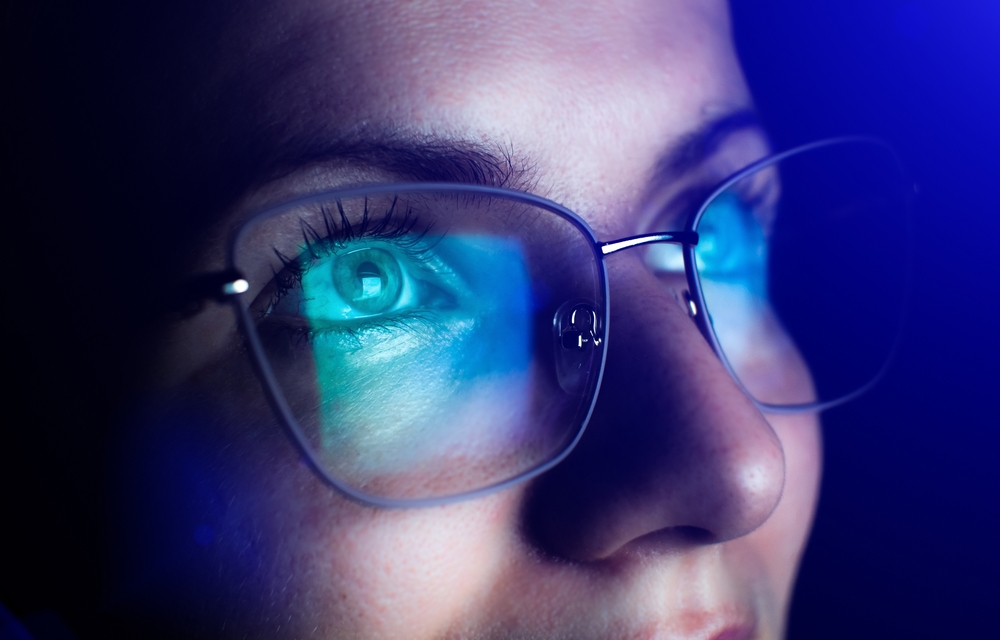Digital devices have become indispensable in modern life. From e-learning modules for children to remote work for adults, screens are ubiquitous. But while they bring convenience and connectivity, they also introduce challenges for eye health. Unmanaged screen time can strain eyes and disrupt well-being. It’s crucial to address these challenges with proactive strategies. Families can benefit from expert guidance on eye care, which can provide regular, professional eye check-ups. These preventative measures help safeguard against unforeseen issues.
Understanding blue light and practical strategies for managing exposure are essential for protecting eye health without sacrificing technology’s advantages. Families can navigate the digital landscape with targeted tips while maintaining a vibrant, healthy vision.
Understanding Blue Light
Blue light forms part of the visible spectrum, characterized by its high energy and short wavelengths. This light is emitted by multiple sources, including the sun(a natural source)and various artificial sources, such as digital screens and LED lights. The rise in screen usage has made blue light a significant concern for eye health practitioners today. While small amounts of exposure can be beneficial(boosting alertness and cognitive functioning), excessive exposure, especially from screens, can lead to discomfort and visual health issues. The American Academy of Ophthalmology points out the pseudoscientific nature of many products claiming to block blue light, emphasizing the importance of informed, practical approaches over quick fixes. To learn more about protecting your eyes against blue light, click here: https://ksfamilyoptometry.com/winfield-family-optometry/.
Blue Light’s Effect on Eye Health
Research has continuously shown the strain prolonged blue light exposure imposes on the eyes. Common symptoms of extended screen use include eye strain, blurred vision, and headaches. But beyond immediate discomforts, blue light exposure incredibly late in the day can disrupt sleep patterns. It happens because blue light can hinder melatonin production, the hormone responsible for regulating sleep. A prominent study by Harvard Medical School highlights that exposure to blue light can alter sleep cycles and potentially heighten the risk of chronic health conditions. These effects underscore the importance of proactive measures to limit blue light exposure when possible.
Effective Screen Time Management
Managing screen time has become a priority for health, particularly for children, who are more vulnerable to its effects. To mitigate the impacts of blue light on our lives, experts recommend structured screen time management. For instance, families can adopt the 20-20-20 rule, a straightforward yet effective method for reducing digital eye strain. Every 20 minutes, encourage taking a 20-second break to focus on something 20 feet away. Harvard Health specialists say this technique is essential for prolonged screen time since it relaxes the eye muscles and reduces tiredness.
Practical Tips for Eye Protection
- Use Screen Filters: Screen filters can significantly reduce glare and blue light exposure, providing an immediate solution for frequent screen users.
- Adjust Screen Brightness: Ideally, screen brightness should align with the surrounding light to prevent additional strain on the eyes. Device settings can automatically adjust screen brightness to maintain this balance.
- Encourage Outdoor Activities: Natural daylight provides necessary exposure to healthier spectrums of light while also allowing eyes to relax from the proximity effects of screens. Regular breaks for outdoor activities are crucial, especially for children.
Preventive Strategies for Families
Establishing healthy screen habits starts at home, with family support as a catalyst for effective change. Designating tech-free zones, particularly during family meals and before bedtime, helps reinforce the importance of offline connections and rest. Consistent bedtime routines can aid in better sleep—critical for growing children—and promote a larger culture of wellness within the family. Teaching the value of balance and mindfulness when interacting with screens can cultivate lifelong healthy digital habits.
The Role of Optometrists
Regular consultations with optometrists are indispensable for maintaining good eye health in the digital age. With blue light and screens becoming ever-present, these check-ups provide opportunities for professional assessments to identify potential risks. Trusted care providers offer comprehensive services that assist in implementing personalized eye health strategies. These consultations address existing concerns and empower families with the knowledge and resources to prevent future vision problems.
Conclusion
The onslaught of digital screens in everyday life calls for a renewed focus on eye health. Families can effectively counteract the adverse effects of blue light exposure by incorporating simple strategies—such as vigilant screen time management and regular professional eye examinations. Easing the strain on vision with informed practices allows families to reap the benefits of technology while preserving their most important sense. It’s all about striking a balance that embraces technological advancement while prioritizing health.



